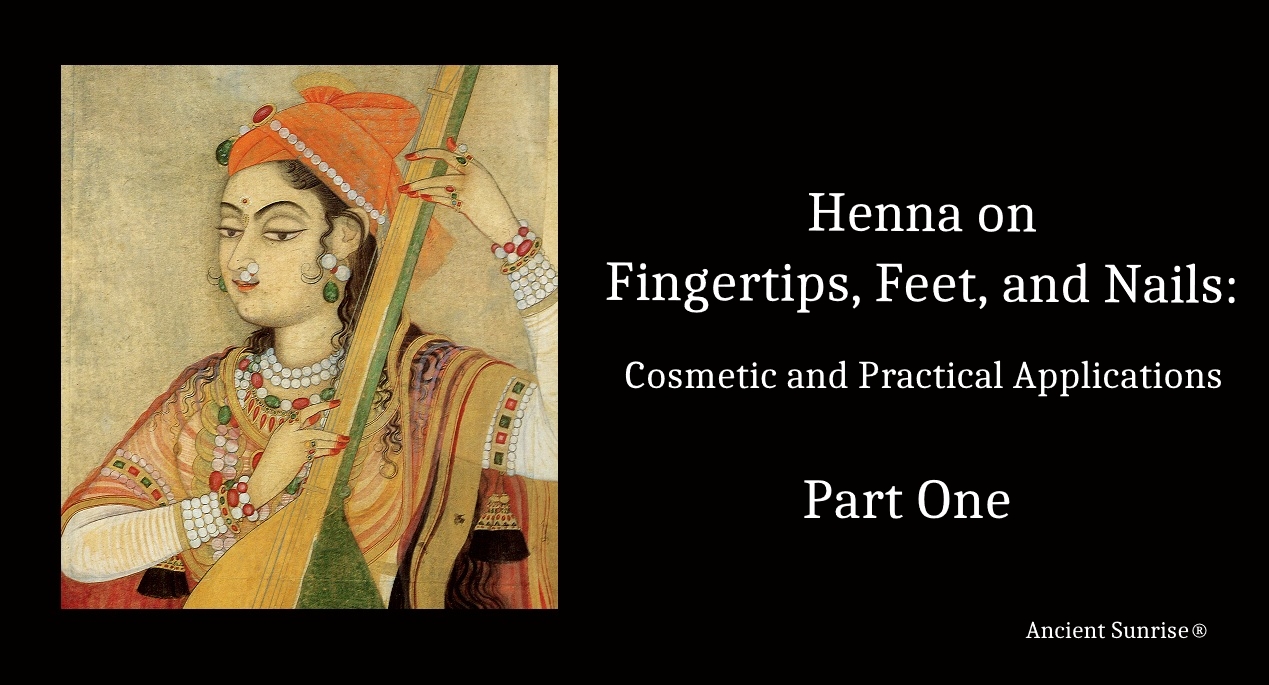
If you are familiar with using Ancient Sunrise® Henna for Hair, you will already know about the wonderful benefits of using henna. Hennaed hair is stronger, smoother, shinier, and has lasting color. Because of its many beneficial properties, henna (lawsonia inermis) has been used not only on the hair but on many parts of the body for various purposes since possibly as early as 1700 BCE.
Lawsonia inermis grows naturally in hot, semi-arid climates. Regions include Northern Africa, the Arabian Peninsula, and the Indian Subcontinent. Wherever it grew, the people of those regions found a use for it. It was likely discovered when livestock grazed on henna plants and herders noticed the red coloring around the animals’ mouths. If the herders inspected the animals’ mouths for wounds, thinking the dye was blood, they would have noticed that their hands had become stained as well.
Henna has been used for both cosmetic purposes as well as practical applications. Its ability to stain keratin and condition the hair led to its use in grooming and beautifying practices for both women and men. Its additional health benefits made it useful for combating a number of skin conditions, as well as being visually appealing.

Cosmetic Applications
Henna is now more commonly known for its use in body art, such as the elaborate designs that cover the hands and feet of brides. Henna stands are popular at fairs, festivals, and in areas of tourism. Traditionally, henna is used to decorate the skin with patterns for religious and cultural celebrations, and simply for adornment. Apart from its use to create delicate, intricate designs, henna was also applied as a solid, even color on areas such as fingertips and feet for both beauty and practicality.
Dancers and musicians hennaed their fingertips to bring more attention to the movement of their hands. A henna “slipper” on the feet was common in many cultures. Using henna for cosmetic applications was once as commonplace as using makeup or nail polish. In many cases, not applying henna would be something akin to not brushing one’s teeth; failing to do so would make a person seem dirty and neglectful of their personal hygiene.
Physical and Spiritual Cleanliness
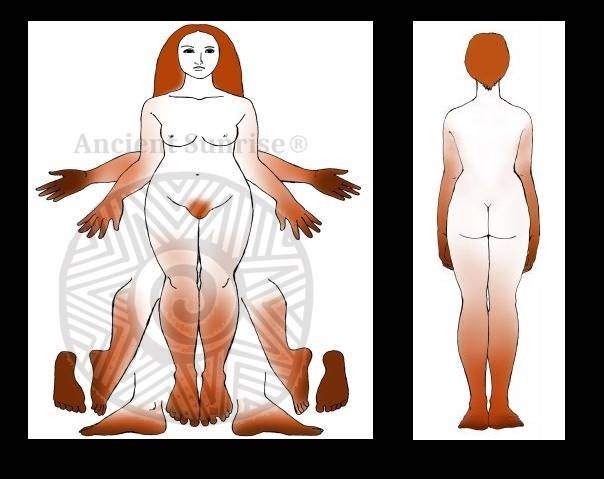
Henna stains darkest on hands, feet, and hair.
Because henna was applied after washing, it indicated cleanliness, and therefore purity. This is especially the case with women. If a person’s hands, feet, and/or hair was freshly hennaed, one could assume that they had recently been to the public bath.
It was assumed that illness was linked to the Evil Eye, and that henna repelled it. A freshly washed and hennaed body was both physically and spiritually clean. It was believed that the Evil Eye was particularly attracted to the bodily fluids of women. A woman was considered dirty and susceptible to the Evil Eye while during her period, after intercourse, and during childbirth; afterward, she washed and hennaed herself. Fresh henna stains showed that she was again clean and pure. In the case of a household with multiple wives, fresh henna marked the women with whom it was safe for the husband to interact.
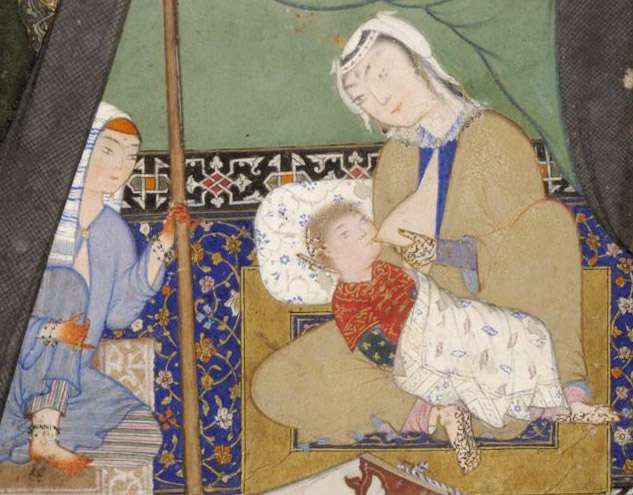
A mother feeds her newborn. Her hands and feet are adorned with henna patterns. Her wet-nurse has brightly hennaed hands, feet, and hair.
“The Amah Feeds the Newborn” Detail from Life in The Country: The Nomad Encampment of Layla’s Tribe, Tabriz, 1539 – 43, Cambridge, Harvard University Art Museum 1958.75
Practical Applications
Remedies which included henna as an ingredient have been discovered in historical texts such as the Ebers Papyrus that date back to thousands of years ago.
The Ebers Papyrus is a text from Ancient Egypt containing hundreds of detailed descriptions of remedies, pharmacopoeia, and formulas gathered and cataloged from numerous sources. It dates back to around 1550 BCE. Many of these remedies included henna as an ingredient. Of those, most common were topical applications for hair and skin ailments.
Modern day scientific studies have found that using henna as a remedy is more than an old wives’ tale. Studies have shown the effectiveness of henna, and/or solutions derived from henna and its compounds, to be effective in anti-fungal, anti-microbial, anti-inflammatory, and even anti-cancer uses. It has been found to expedite wound healing, and also to act as an analgesic against pain. Lawsone also provides natural UV protection to hair and skin. This protection lasts even after the stain has faded from the skin. This bodes well for future pharmaceutical innovations. Allergy to henna is extremely rare, and the spread of knowledge about practical applications for henna would keep henna agriculture sustainable.
In addition to the above properties, the simple binding of the lawsone molecule strengthens keratin, reinforcing and conditioning the area to which it is applied. This makes it extremely useful for protecting and conditioning hands, feet, and hair.
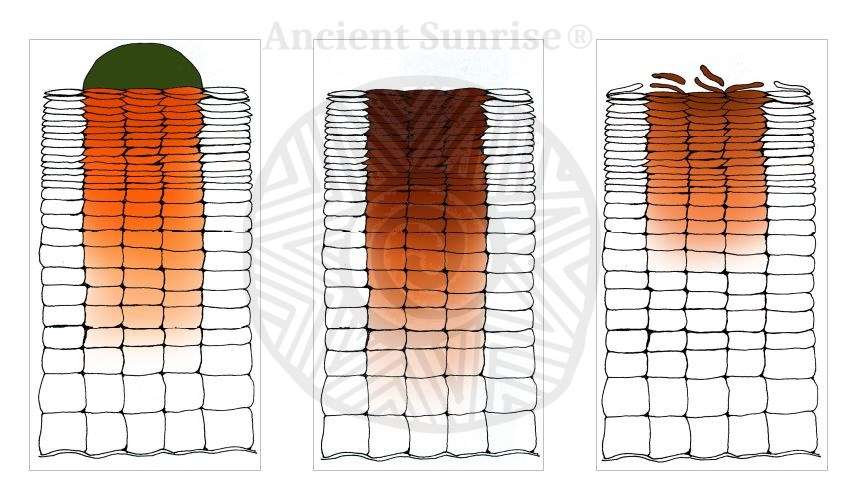
When henna paste is applied, the dye migrates into the surface layers of the stratum corneum. As it oxidizes, the stain darkens. The surface layers of skin are shed over time, and the lower layers grow to replace them.
Strengthening Skin and Lessening Pain
Henna’s dye molecule, lawsone, binds firmly to keratin, allowing it to stain skin, nails, and hair. When it does so, it adds reinforcement.
When henna is applied to skin, the treated areas feel thicker, stronger, and less susceptible to pain. While it strengthened and protected skin, henna also helped to soften and shed excess rough skin and callus, keeping the skin smooth and attractive. Dancers hennaed their feet to make them more attractive and to keep their feet from blistering, cracking, and hurting after long hours of performing. Musicians did so as well, to protect their fingers as they played. Women who worked with their hands hennaed their fingertips for the same reason.
It is likely that the pain receptors under the skin become somewhat dulled by the addition of lawsone. One study found that people with hennaed fingertips rated the pain of a needle prick lower in comparison to those without hennaed fingertips. This is helpful knowledge for those who prick their fingers to perform regular blood sugar testing.

Henna protects a musician’s fingertips.
A Lady Playing the Tanpura, Rajasthan, Kishangarh, ca. 1735, Metropolitan Museum of Art, New York, Fletcher Fund, 1996 (1996,100.1) Indian Court Painting, 16th – 19th C
Anti-Fungal and Anti-Microbial Properties
Besides its capacity to bind to and stain keratin, henna was and still is used for its anti-fungal and antimicrobial qualities. Historically, it has been used to treat ailments such as athlete’s foot, diaper rash, and wounds. (Note: Do not apply henna to young children unless you are absolutely certain that they do not have a hereditary G6PD deficiency).
Ringworm, athlete’s foot, and related skin fungus conditions seem to be eradicated with one or two good applications of henna. Dandruff, often caused by fungus, is lessened after a person uses henna on the hair. Henna is safe to use on animals to treat fungal infections.
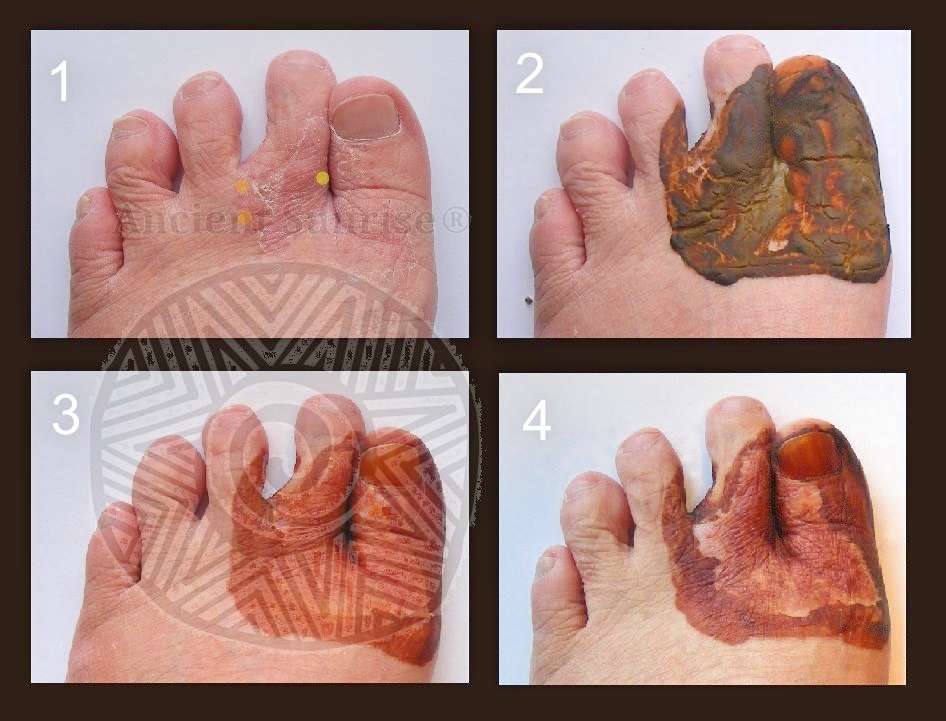
1. Athlete’s foot (tinea pedis) blistering began at the yellow dot and spread as far as the orange dots.
2. Henna is thickly applied to the affected area and left for two hours. Itching ceased almost immediately upon application.
3. As the stain darkened, the infected area peeled away.
4. After several days and an additional application, the infected area had shed and new healthy skin grew in its place.
Wound Healing Properties
Henna speeds wound healing and decreases inflammation. Wounds appear to heal more quickly when henna is applied; however, if an open wound is stained with henna, the stain may become permanent when new skin grows over top. A weaker henna paste mixed with oil could be used on open wounds for minimal staining.
In Saudi Arabia, henna is a recommended remedy for diabetic foot ailments, as it lessened pain and inflammation from diabetic neuropathy, and helped lesions heal quickly while deterring infection.
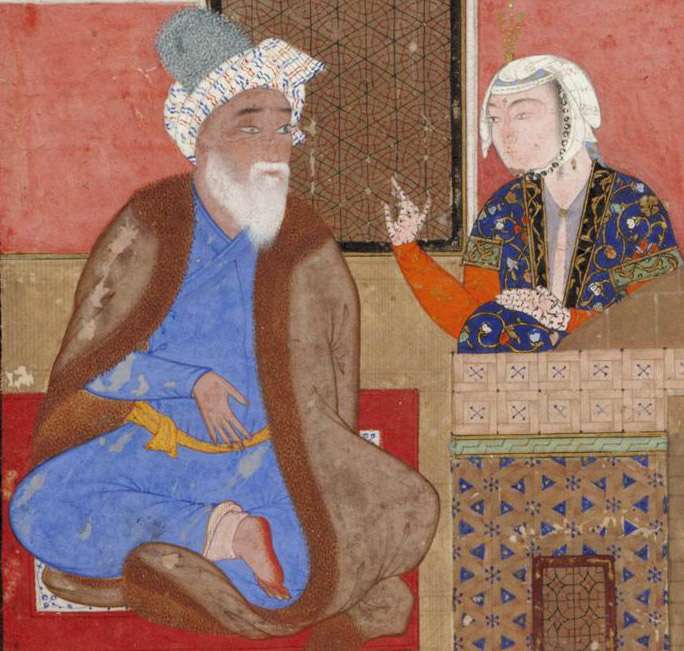
It is rare to see art depicting men with hennaed feet. This man may have had diabetic neuropathy, or just tired feet.
Detail: “Nighttime in a Palace” (1539 – 43, Iran), folio from a manuscript, attributed to Mir Sayyid ‘Ali (Persian, 16th century), Arthur M. Sackler
Henna on the Fingertips and Nails
Henna can protect weak nails against chipping, breaking, and flaking. While skin regularly sheds its outer layers, causing a henna stain to fade after a couple of weeks, henna fades very little on nails. It remains there until the stained part has grown and is clipped away. If the nails have a fungus infection, henna would eradicate it.
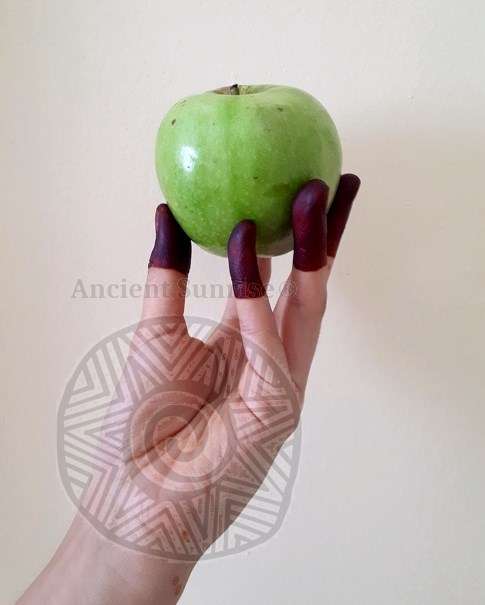
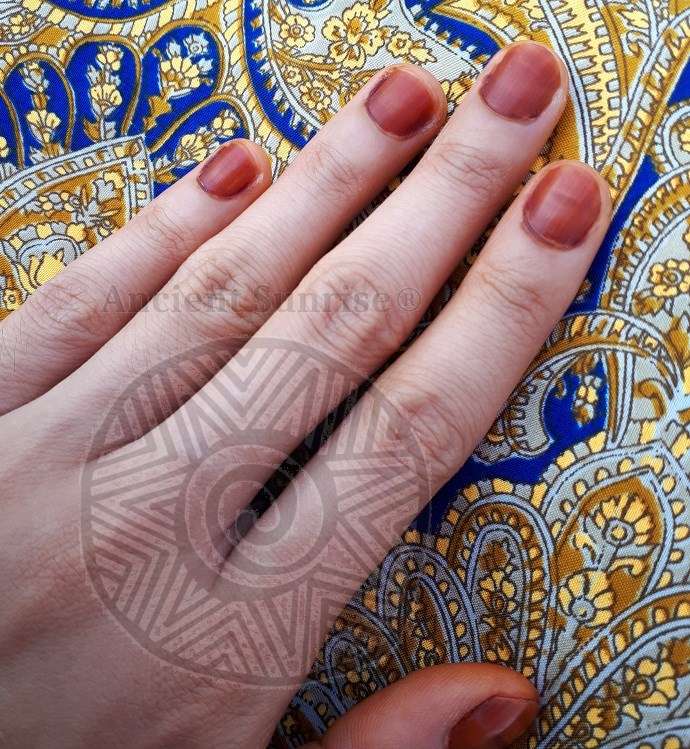
Henna on nails and henna on fingertips. A fully oxidized stain on skin is a deep maroon brown.
Using henna to stain fingernails dates back to ancient times, and has been practiced in many regions and cultures. In Ancient Egypt, henna was commonly used to stain fingernails, and it was even considered impolite to have unhennaed nails. Mummies have been discovered with bright orange hair and nails, likely due to the used of henna in preparing the body for burial.
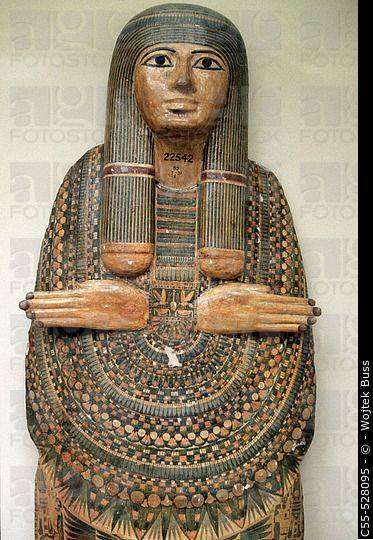
The sarcophagus of the chantress Asru has darkened nails. Circa 750 BCE.
In Islamic and Orthodox Jewish cultures, it is important to keep clean for prayer. Use of conventional nail polish is not allowed because the coating prevents water from touching the surface of the nail. Hennaed nails are acceptable because henna stains the nail without coating it.
A lower concentration of lawsone is also found in the leaves and flowers of garden balsam, a species of impatiens. In Korea, young girls crush the plant into a paste and apply it to their fingertips for a light orange stain.
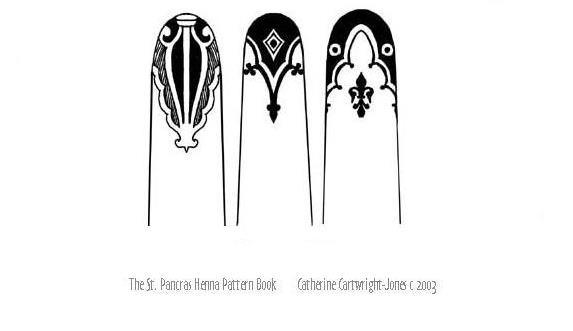
From the St. Pancras Pattern Book by Catherine Cartwright-Jones
Henna on Feet
Henna keeps feet clean, protected, and conditioned. It is used to rid one of athlete’s foot and similar fungal ailments that affect the feet. Henna aids in the softening and shedding of calloused skin, leaving feet smooth and soft.
Variations of the henna slipper can be seen in artwork and photographs from various cultures across time. This was done across the whole sole of the foot and toes, or just from the ball of the foot to the toes. A solid slipper was common for most; additional elaborate designs decorated the feet of brides, new mothers, and the upper class.
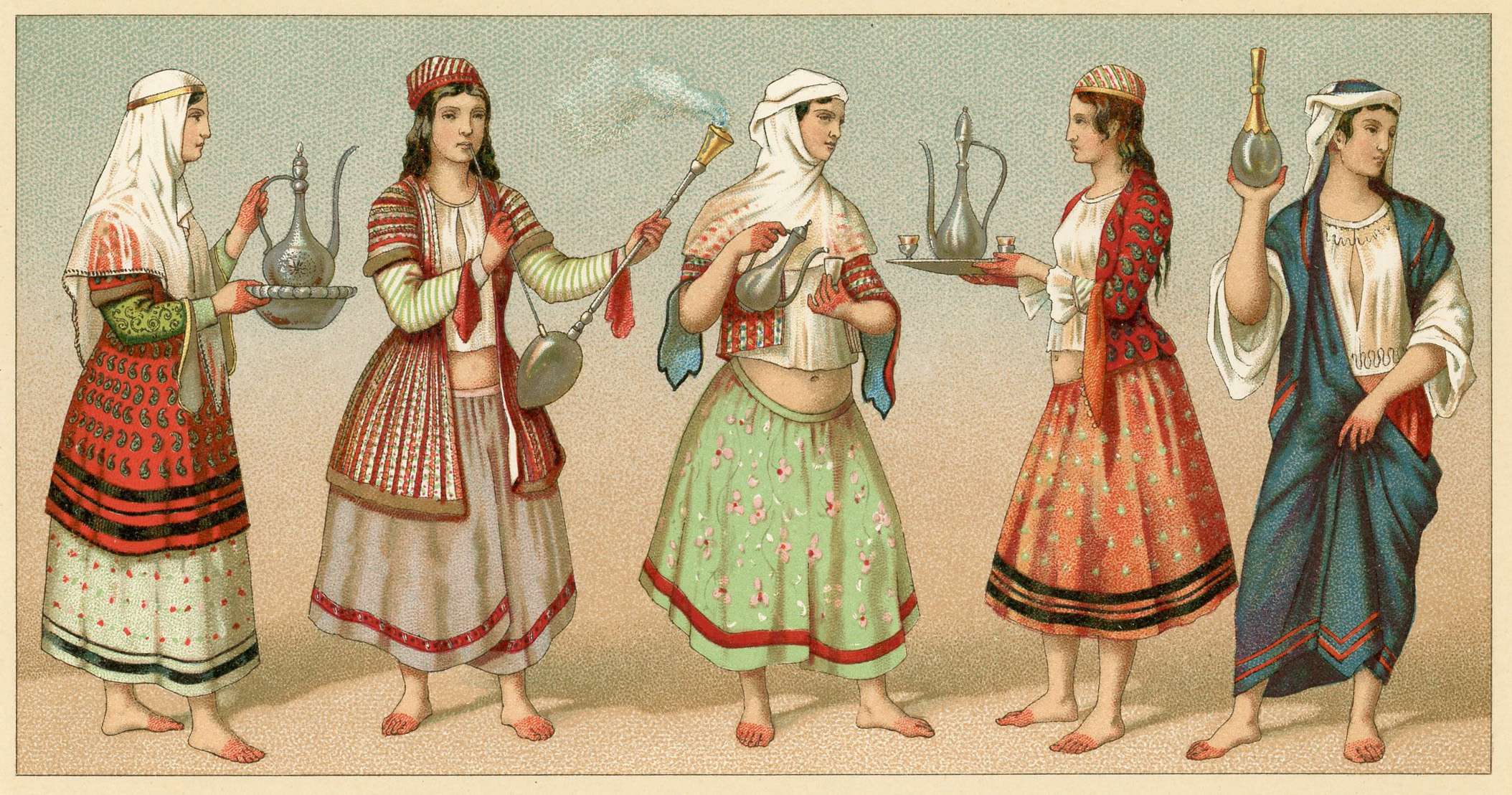
An illustration of Persian women’s fashion shows hennaed feet. From a book printed in Paris, France, late 19th century.
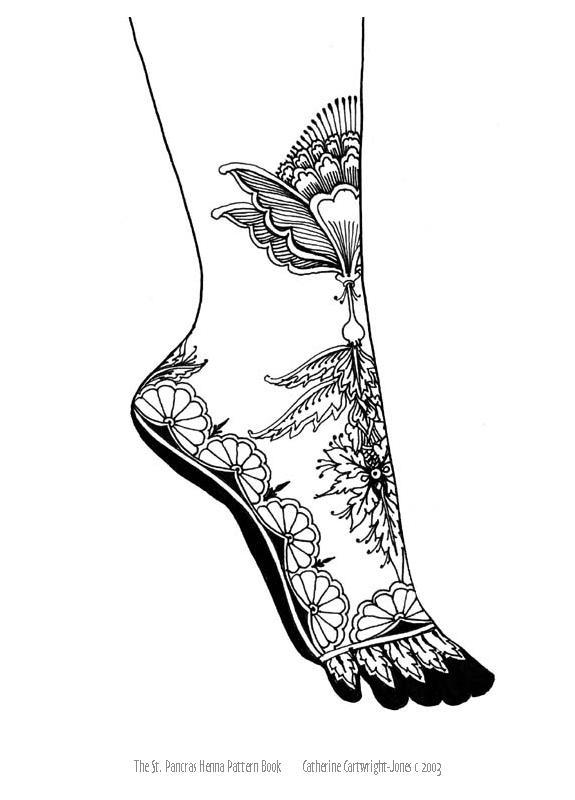
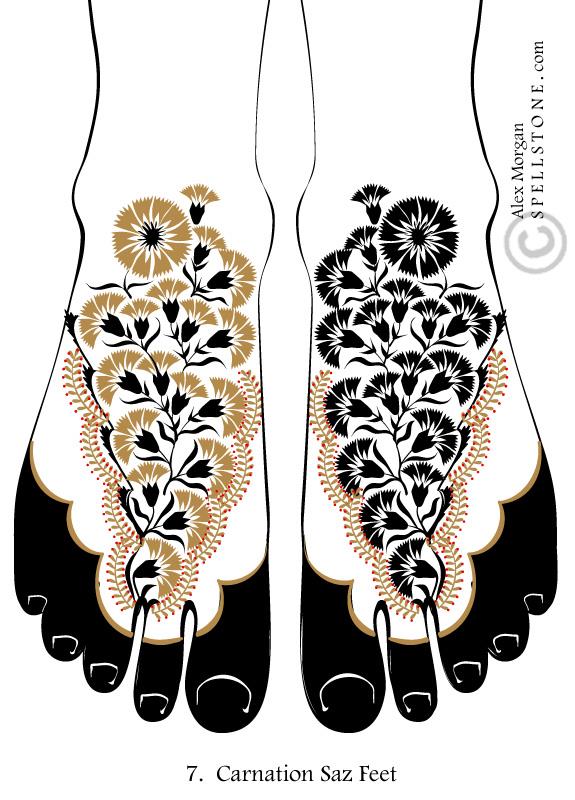
From the Spain Pattern Book by Alex Morgan, and the St. Pancras Pattern Book By Catherine Cartwright-Jones
This article is the first part of a two-part series. This section discusses the history and science behind the use of henna on various areas of the body. Part Two demonstrates how these techniques are done.
References
Bakhotmah, Balkees A., and Hasan A. Alzahrani. “Self-reported use of complementary and alternative medicine (CAM) products in topical treatment of diabetic foot disorders by diabetic patients in Jeddah, Western Saudi Arabia.” BMC research notes 3.1 (2010): 254.
David, A. R., and V. Garner. “Asru, an ancient Egyptian temple chantress: modern spectrometric studies as part of the Manchester Egyptian Mummy Research Project.” Molecular and Structural Archaeology: Cosmetic and Therapeutic Chemicals (2003): 153-162.
Pradhan, Rohan, Prasad Dandawate, Alok Vyas, Subhash Padhye, Bernhard Biersack, Rainer Schobert, Aamir Ahmad, and Fazlul H Sarkar. “From body art to anticancer activities: perspectives on medicinal properties of henna.” Current drug targets 13, no. 14 (2012): 1777-1798.
Semwal, Ruchi Badoni, Deepak Kumar Semwal, Sandra Combrinck, Catherine Cartwright-Jones, and Alvaro Viljoen. “Lawsonia inermis L.(henna): ethnobotanical, phytochemical and pharmacological aspects.” Journal of Ethnopharmacology 155, no. 1 (2014): 80-103.

Is cassia as effective as henna for conditioning the skin?
Cassia’s dye, chrysophanol, does not bind to the skin as strongly as henna, and you may not see a color change. It has been found to have some conditioning benefits and has demonstrated effectiveness against eczema and psoriasis.
Please tell me more about this. May I ask you a question?